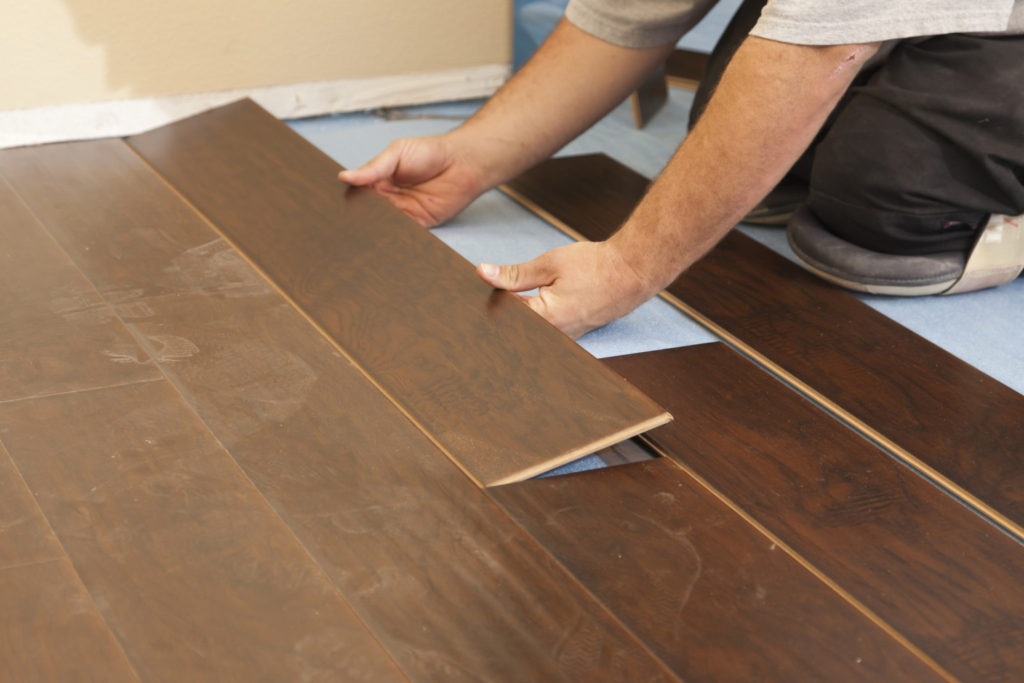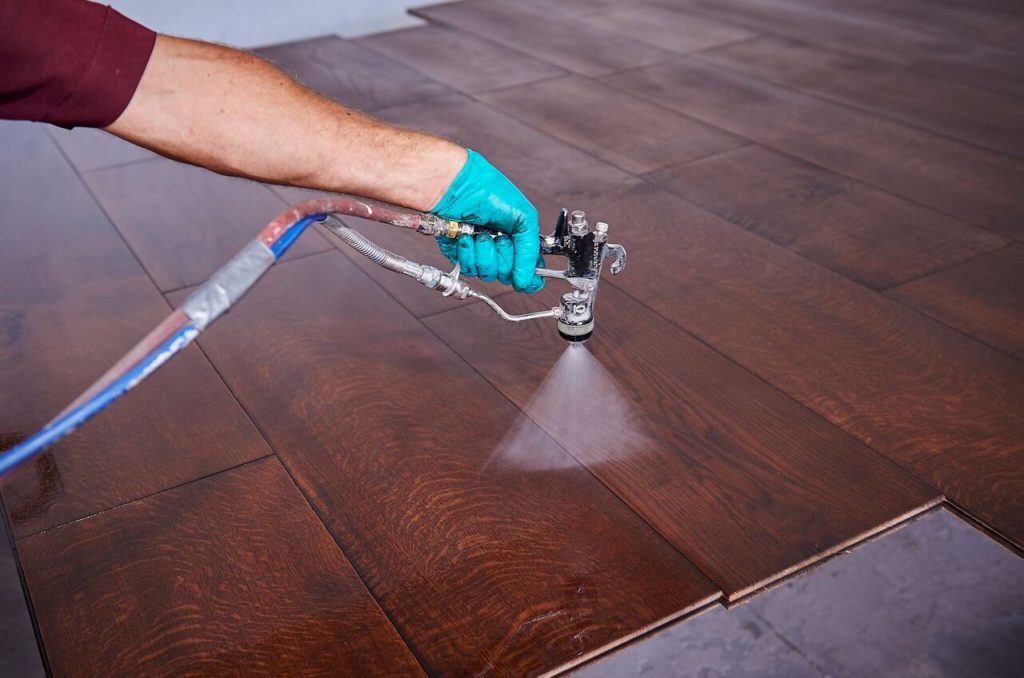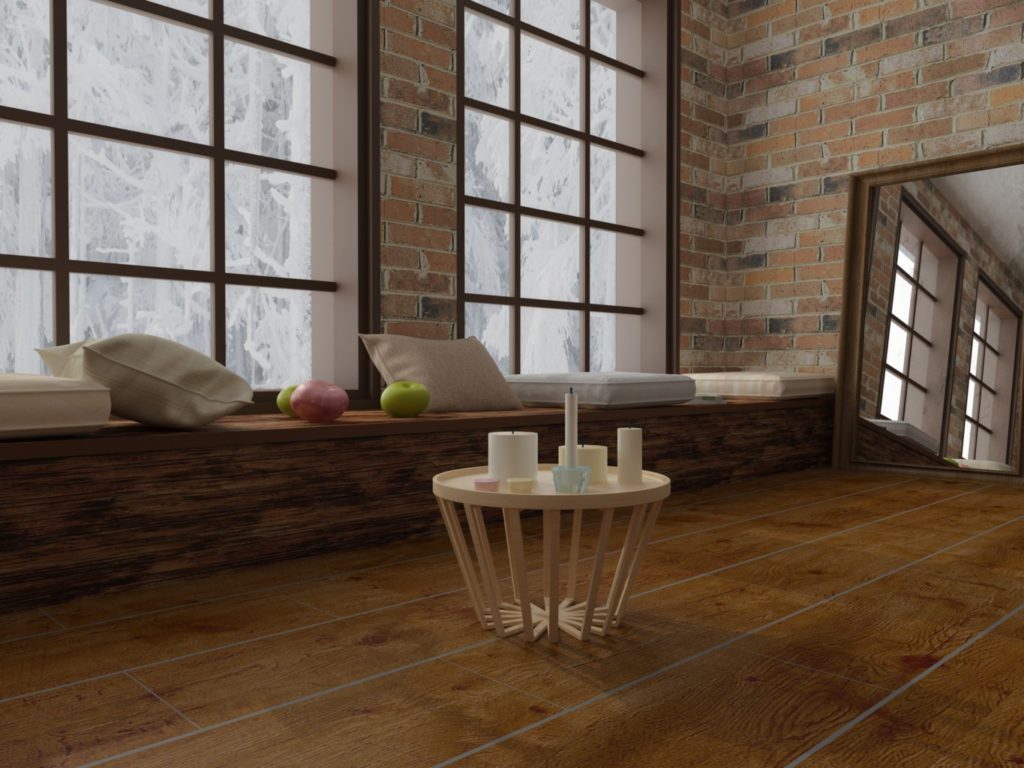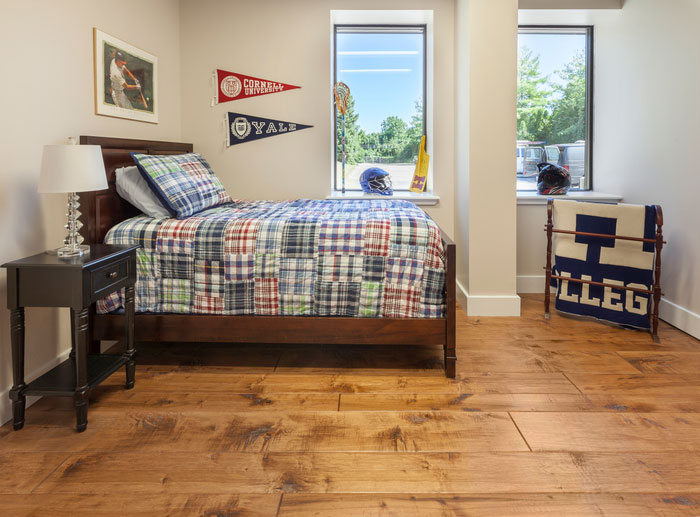The popularity of prefinished hardwood floors, including prefinished wide plank floors, is on the rise––and for good reason. Prefinished engineered wide plank floors offer timeless beauty without the frustration of installation.
However, engineered floors are simply not for everyone or every project. Here’s a list of the pros and cons of engineered wide plank flooring so you can decide whether it will work for your next project.
First, let’s get into the pros:
Pros of engineered wide plank floors
Added durability
Prefinished engineered floors are coated in a highly durable UV wood floor finish at the factory and cured. This process ensures that the finish will last for years to come. You could complete a UV wood floor finish at home if you have unfinished wood planks, but this requires rather expensive equipment and supplies.
Opting for engineered wide plank floors ensures that they will have a durable finish that will stand up to a lot of wear-and-tear.
Ease of installation

Prefinished engineered flooring makes it easy to complete the installation yourself, even if you have little experience. There’s no need to sand the floor and coat it in finish because these steps are already done at the factory.
When you receive your prefinished engineered wide plank floors, they’re practically ready to be installed––all you really have to do is some subfloor prep, and then complete a rather easy installation.
A floating prefinished hardwood floor installation involves installing an underlayment, testing the subfloor and the flooring for moisture levels and letting the floor acclimate, cutting planks when necessary or shaving them down to fit underneath door jambs, clicking the floor together, and nailing down the planks if you want extra stability.
That’s it––no finishing, cure time, or heavy equipment required. All of the finish work has been done at the factory. Since you don’t have to coat the floors in finish, you save yourself from having to deal with the dust and VOCs that come with sanding and finishing a hardwood floor.
More dimensionally stable and can be installed below grade
If you’re planning to install a wide plank hardwood floor in a place that is considered below grade––like a basement, attic, or anywhere that doesn’t have ideal moisture conditions––engineered flooring is a great choice (and sometimes the only choice).
This is because it’s more dimensionally stable than unfinished wood, and this is important because wide plank floors typically need more dimensional stability than strip flooring in order to be problem-free.
Dimensional stability of wood refers to the measurement of how much a wood plank shrinks or expands in response to the relative humidity (moisture content) of the air around it. Because engineered floors are more dimensionally stable than solid floors, they are less likely to cup, gap, or buckle in response to moisture.
Cons of prefinished engineered wide plank floors
Not as customizable as unfinished wide plank floors

Unfinished hardwood floors are like a blank canvas. You can apply any stains, pretreatments, and finishes and experiment with different combinations to achieve virtually any look you want.
Prefinished hardwood floors are simply not as customizable as unfinished floors because you can’t apply products to a prefinished floor to change its appearance.
While it is possible to sand down a prefinished floor and refinish it, this process is typically very difficult.
When selecting a prefinished engineered wide plank floor, you have to choose wisely. Fortunately, there are a variety of engineered floors available to fit almost any style. The manufacture of prefinished hardwood floors has improved substantially over the years, so there are many unique types of these floors in various colors and stains to match any style.
More costly than unfinished wide plank hardwood floors
A typical wide plank engineered floor will run you a few more dollars per square foot than an unfinished wide plank floor, so you will spend more money on the flooring itself.
However, the tradeoff with this is that the installation cost has the potential to be less since you can install it yourself if you so choose. In addition, the fact that there’s no finishing process involved in installing an engineered wide plank floor helps you save money on materials.
Provide a less natural look

The beveled edges of an engineered floor are another feature that can be considered undesirable by some because it takes away the natural look of the floor (although some people prefer beveled edges in their floors).
In comparison, a site-sanded floor doesn’t have the beveled edges; it’s almost completely flat, giving it a more natural look than a prefinished engineered floor with beveled edges. You can still achieve a natural, rustic style with an engineered floor based on the species and treatment options you select.
Whether you choose a prefinished engineered or an unfinished engineered wide plank floors from Wide Plank Floor Supply, you can be sure that you will receive a high-quality product that will provide beauty for years to come.

Engineered hardwood flooring is designed to reduce the moisture problems associated with conventional hardwood. so, it’s a good choices also. Thank you for sharing.